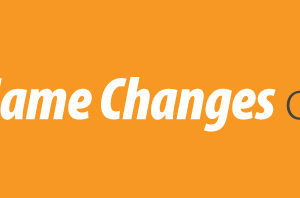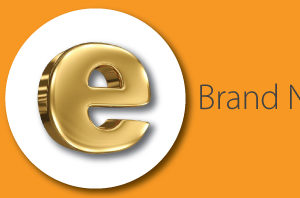
Brand nicknames have been around for years, but what happens when these brands go to a digital setting, such as social media or website? Do they choose their corporate name or their brand nickname?
As reported by HBR on July 8th, 2021 by Zhe Zhang and Vanessa M. Patrick.
Make Your Brand’s Nickname Work for You
Consumers having been driving Chevys, drinking Cokes, shopping at Tarjay, and eating at MickeyD’s for decades. But as more and more brand engagement moves online, how should marketers approach these brand nicknames in an increasingly digital landscape?
In a recent study, we investigated how brand nicknames can influence both consumers’ engagement with brands and how credible they find a brand’s communications. In the first part of the study, we conducted an analysis of more than 10,000 consumer-written tweets that referenced three well-known brands, and compared share and like rates for posts that used formal name hashtags (e.g., #chevrolet, #buffalowildwings, and #newenglandpatriots) with posts that used nickname hashtags (e.g., #chevy, #bdubs, and #pats). We found that nicknames had a clear positive impact on engagement: On average, consumer tweets that used nickname hashtags were shared twice as much and liked three times as much as tweets that used the formal name hashtags.
However, things get a little more complicated when you look at company-written posts. We conducted six follow-up studies with more than 1,500 U.S. consumers in which we compared how people reacted to brand nicknames in Instagram and Twitter posts coming from consumers and from official brand accounts. We found that who uses a brand nickname can make a big difference: When consumers used brand nicknames, it often made the information in their posts appear more credible and authentic to other consumers — but when a brand used its own nickname, it actually had the opposite effect.
Why might that be? Our research suggests that when you see a fellow consumer use a nickname in an online review or social media post, it can send the message that the consumer has a genuine relationship with the brand, thus increasing your trust in whatever that consumer says about the brand. But when companies use nicknames in their own official communications, it can come across as promotional and manipulative, making their posts seem less credible. For example, in one study, we found that when consumers read an Instagram post in which Walmart used its nickname Wally World to promote a product, they were 9% less likely to agree that the post seemed sincere, and 10% less likely to buy the product, than those who read a post in which Walmart used its formal name.
Of course, this doesn’t mean that brands shouldn’t engage at all with their nicknames — but it’s critical to engage in the right way. Based on our research, there are several key Dos and Don’ts that marketers should consider when it comes to managing brand nicknames in the digital world:
What to Do:
1. Stay Abreast of Your Brand Nicknames
The vast majority of consumers regularly encounter brand nicknames — in fact, only 3% of the consumers in our studies indicated that they had never seen a brand nickname online. It’s critical for marketers to be aware of how their customers are talking about them, and that includes keeping tabs on the evolving, informal language that consumers use.
To do that, social media teams should make sure they’re monitoring not just their organization’s official name, but also any hashtags or account tags that use common nicknames for their brand. You may think of these unofficial names as secondary, but they can be a lot more widespread than you might realize. Take Chevrolet, for instance. Our analysis showed that 41% of Twitter posts that used a hashtag referencing the company used the nickname “Chevy” rather than the official name. The last thing a marketer would want would be to miss a customer complaint or opportunity for positive consumer engagement just because someone used @nickname instead of @officialname in their post.
2. Include Nicknames in Your SEO Strategy
If you search for “Chevy” in Google, the first result that shows up is Chevrolet’s official website. But search for Mickey D’s or Tarjay, and you’ll see results from sites like Urban Dictionary and Wiktionary above these brand’s own websites. It’s critical to keep common brand nicknames in mind when designing your Search Engine Optimization (SEO) strategy, to ensure that your consumers can find your brand easily no matter what name they use.
Importantly, this isn’t just about Google hits. Has your brand partnered with a platform like Alexa to increase discoverability? If so, it’s worth ensuring that these third-party tools recognize your brand’s nicknames, since it’s very possible that those are the terms your customers will be using when searching for your company. And of course, marketers should be sure to take into account that a brand can have more than one nickname. For example, in our research we saw customers referring to their BMWs as beemers, beamers, and bimmers. Ensuring that all versions of your brand’s nickname are included in your SEO strategy can help to maximize your brand presence in a crowded digital landscape.
3. Protect Your Brand Nicknames
Brand nicknames may be created and used by consumers, but it’s up to the company to make sure those nicknames are legally protected. This applies in a number of areas, from securing trademarks for common nicknames to purchasing URL domains. For instance, try going to www.beemer.com. Despite the fact that the term beemer has more than two million search results on Google, the URL isn’t owned by BMW. Proactively protecting your nicknames minimizes the risk of the name being hijacked by competitors or unrelated businesses.
For example, many younger consumers refer to the retail giant Canadian Tire by the irreverent nickname “Crappy Tire,” but the company was taken by surprise when a consumer registered the website “crappytire.com” and used it to post negative complaints about the company. The company quickly filed a case with the World Intellectual Property Organization (WIPO), but they lost the legal battle. The WIPO found that the company had “failed to establish that the complainant (the company) has rights in the trademark or service mark,” and that therefore there was no legal recourse to reclaim the URL for their popular nickname. To make matters worse, Canadian Tire then offered to buy the domain, but the owner refused to sell.
Similarly, soccer superstar Cristiano Ronaldo ran into trouble when he tried to promote his line of underwear in the U.S. using his popular nickname CR7. It turned out that another business had already trademarked the name CR7 in America, sparking a complicated legal battle. While there’s no avoiding legal risk entirely, it’s a good idea for brands to ensure their nicknames are as protected as possible, before an issue arises.
What Not to Do
1. Don’t Try to Stop Consumers from Using Nicknames
In 1913, Coca-Cola launched a campaign called Coca-Cola: Ask for it by its full name. Yet after 30 years of persistent marketing, consumers continued to use the nickname “Coke.” More recently, Chevrolet experienced major backlash after news broke that the company had banned internal use of the name “Chevy” in an attempt to ensure brand consistency.
Especially if a brand nickname has a negative connotation (such as “Whole Paycheck” for Whole Foods, or “Fix it again, Tony!” for Fiat), it can be tempting to try to limit its use. But while you might not like your brand’s nicknames, you can’t really stop your customers from using them — and you’re only likely to alienate them if you try.
2. Don’t Co-opt Nicknames
The main reason that brand nicknames resonate with consumers is that they are created, used, and owned by consumers, meaning they are a genuine reflection of how consumers feel about a brand. Eighty-one percent of the consumers in our studies believed that brand nicknames originate from consumers, not companies, and 88% felt that nicknames should be used by individuals, not by companies. When a company blatantly tries to adopt its customers’ language for marketing purposes, it can come off as forced, transforming the nickname from a consumer-owned term of endearment into an official, company-owned name. This often eliminates the authenticity and genuineness that the name conveyed when used exclusively by consumers.
Part of what makes this so challenging is that co-opting nicknames can seem beneficial to the brand in the short term, but in the long run, it can destroy the name’s status as a genuine nickname. This doesn’t mean that brands can never use nicknames — but it’s important to be strategic about how you use them. For example, fully rebranding with a consumer-generated nickname probably isn’t a good idea, but highlighting brand nicknames in referral programs, customer reviews, or other peer-to-peer interactions can help to make a brand’s marketing message seem authentic and genuine without threatening consumers’ ownership of the nickname.
3. Don’t Force a Nickname on Consumers
For a nickname to stick, it has to come naturally. If your brand doesn’t have one yet, it can be tempting to come up with a nickname yourself and try to push it onto your customers — but our research suggests that is unlikely to work. Nicknames convey authenticity because they are organic, created and owned by consumers.
That said, you don’t have to just sit around and wait, hoping that a good nickname will come to you. While you can’t force a nickname wholesale onto consumers, there are things you can do to nudge consumers to come up with a nickname. One approach is to encourage customers to choose a personal nickname for their product or account. For example, in our previous research, we noted how Chase bank offers customers the option to nickname their accounts, and how Nikon asks consumers to nickname their products during the online registration process. While these nicknames start out as private names used only by individual consumers, the catchy ones may go viral quickly if consumers choose to share them.
Another approach is to explicitly crowdsource names from your customer base. This allows you to be proactive about your brand nickname strategy while still ensuring that those nicknames are genuinely created, shared, and owned by consumers. For example, the popular “Do us a flavor” campaign from Lay’s invited consumers to come up with their own names for new chip flavors, giving them ownership over the name without totally ceding control over the naming process.
Of course, many of these consumer-generated nicknames will never gain traction. But encouraging consumers to come up with names for your products can plant the seeds of a successful nickname. Even if 99% of these names are only ever used by a handful of people, all you need is one to go viral for those seeds to grow into a genuine, widely-used nickname.
Brand nicknames are only growing more popular among consumers in today’s digital landscape. When used in the right way, these nicknames can confer valuable “street cred” onto a brand, making its messages appear more authentic and credible to consumers. As such, marketers would be wise to keep tabs on these nicknames and ensure they are legally protected — but it is equally important for marketers to acknowledge that consumers are the true owners of these valuable brand assets, and not attempt to control or co-opt them. A well-known nickname is one of the greatest gifts that consumers can give to a brand they love. It’s up to marketers not to squander it.
What are your thoughts on a brand nicknames?
Additional Brand Nicknames Resources:
Why Two Names Are Better Than One (AdAge)
Bimmer, beemer, beamer – how BMW got its nicknames (BMW)
Nicknames for brands and humans: If the shoe fits, wear it. (A Hundred Monkeys)
Breakthrough Branding: Brand Naming Tips and Trade Secrets (IDeas BIG)




